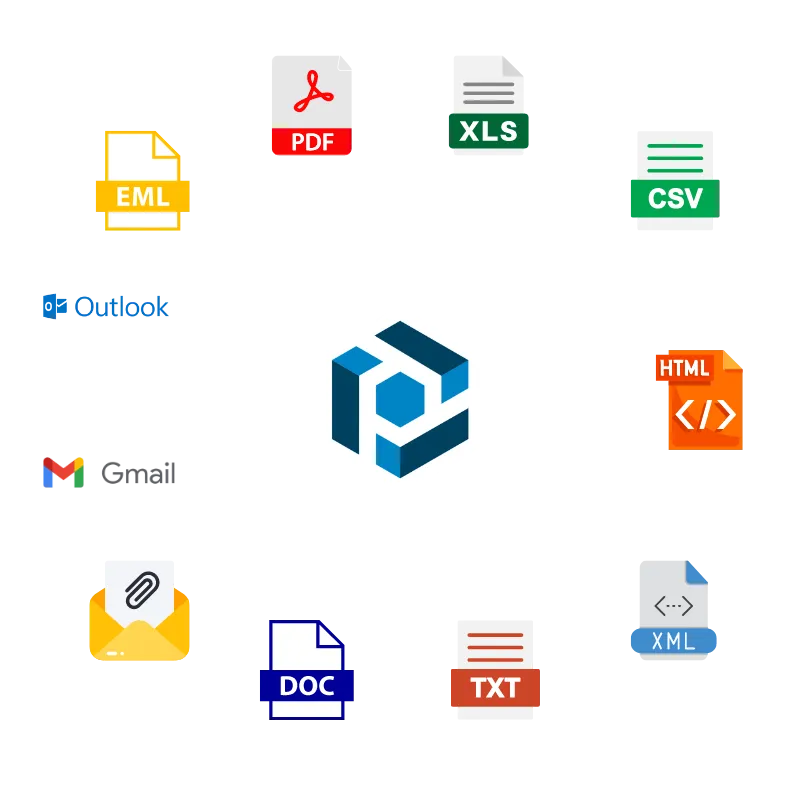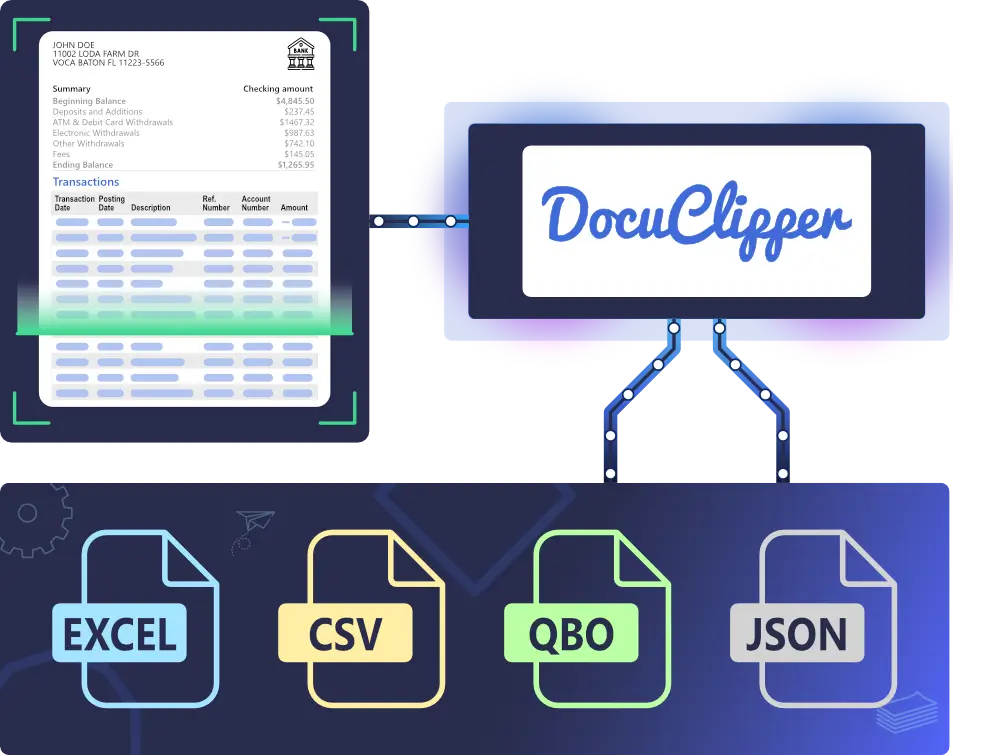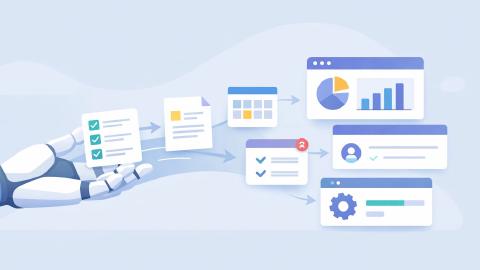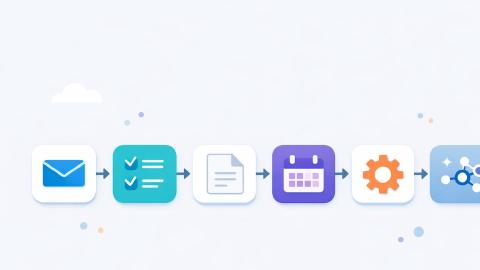15 Best Automated Data Extraction Tools and Software in 2026
Use these automated data extraction tools and software to save time and automate your data entry with AI in 2026.
If you’ve ever wasted hours copying data from PDFs, spreadsheets, or emails, you know how frustrating and error-prone it can be. Many teams face the same problem, which is why automated data extraction tools and software have become so valuable.
Data extraction tools take the manual work out of pulling information, improve accuracy, and connect data directly to the tools already in use. Most importantly, they save you time. Who doesn't love that?
In this article, we'll list out the 15 best automated data extraction tools and software that you can use to save time in 2026. Let's dive in!
What is Data Extraction?
Data extraction is the process of pulling information from different sources and converting it into a usable format.
This could include gathering details from PDFs, spreadsheets, websites, emails, or databases so the data can be stored, analyzed, or transferred into other systems.
The goal of data extraction to make sure information is accessible and ready for workflows without having to re-enter it manually.
Types of Data Extraction
There are a few common approaches to data extraction, each serving a different purpose depending on the source and use case.
Data transfer - Moving data between applications, spreadsheets, or databases.
Data migration - Extracting data to shift from old systems to new platforms.
AI data extraction - Using AI to capture information from documents, invoices, or unstructured text.
PDF data extraction - Pulling tables, text, or fields directly from PDF files.
These methods make it easier to manage large volumes of information while reducing the manual effort required.
Is It Worth Investing in Data Extraction Automation?
Manually copying information from PDFs, spreadsheets, and emails is not only time-consuming but also increases the risk of mistakes. Automated data extraction tools and software solve this by creating faster, more reliable workflows.
Here are some practical reasons why it’s worth considering:
Save time on repetitive tasks - Cut down on hours spent moving or entering data manually.
Keep information accurate - Reduce the chance of errors when capturing details from documents and forms.
Connect with everyday tools - Send extracted data directly into spreadsheets, CRMs, or accounting platforms.
Work with larger volumes - Manage data from many sources without adding extra steps.
Keep things consistent - Make sure formats and records stay the same across systems.
These benefits help make daily work smoother while reducing the stress of managing data by hand.
Which Data Extraction Tool Is Best for Me?
Not every data extraction tool is built for the same job, so the right choice depends on how you plan to use it. Here are some points to think about before deciding:
Look at the type of data you handle - Choose a tool that matches your main sources, whether it’s PDFs, spreadsheets, emails, or databases.
Check how it fits with your current tools - Make sure it can connect smoothly with the apps and systems you already use.
Think about the volume of work - Some tools are better for quick, small tasks while others are designed for large-scale data processing.
Consider ease of use - If your team isn’t technical, a simple point-and-click setup may be better than a developer-heavy solution.
Factor in cost and scalability - Pick a tool that fits your budget now but can also grow as your data needs expand.
By focusing on these factors, it becomes easier to choose a data extraction tool that fits both your immediate needs and long-term goals.
15 Best Automated Data Extraction Tools and Software
Here's our list of the 15 best data automated data extraction tools and software in 2026:
1. Text Blaze

First up on our list of the best automated data extraction tools and software is Text Blaze.
Text Blaze allows you to create smart text templates and insert them anywhere you work to automatically fill out forms, transfer data, automate repetitive typing, and much more.
For example, if you need to quickly fill out a repetitive form in Google Forms or in your CRM, all you have to do is type a keyboard shortcut and Text Blaze will do the rest for you!
With Text Blaze, you can automate form-filling and data extraction on any website with dynamic templates!
With Text Blaze, you can:
Automate repetitive typing anywhere you work! Text Blaze works on Chrome, Windows, and Mac.
Streamline workflows like extracting and transferring data or filling out forms.
Create dynamic templates that you can customize for any situation. Use placeholders and advanced commands to create powerful templates.
Save time for free! Text Blaze is free forever, no licenses or upgrades necessary.
Join over 700,000+ others who are automating data entry with Text Blaze.
2. Docparser

Docparser extracts data from PDFs, scanned documents, and invoices. It uses parsing rules to capture specific fields like names, numbers, and dates.
The data can then be exported to spreadsheets, CRMs, or databases. This makes it a strong choice for finance, logistics, or operations teams.
3. Instant Data Scraper

Instant Data Scraper is a browser extension that helps capture data from websites. It identifies tables and lists automatically, making it easy to export them into spreadsheets.
Tools like Instant Data Scraper work best for quick web scraping tasks where structured data is needed. Users can save time by avoiding manual copy-paste from websites.
4. Airbyte

Airbyte is an open-source platform for data integration and transfer. It allows you to extract data from APIs, databases, and SaaS tools, then load it into warehouses.
Developers and data teams use it to build automated pipelines. It’s useful for managing large-scale data migration and syncing.
5. Octoparse

Octoparse provides point-and-click web scraping without coding. It lets you build workflows to capture data from websites, even with complex layouts.
Extracted data can be exported to Excel, databases, or cloud storage. It’s commonly used by researchers, analysts, and marketing teams.
6. Parseur

Parseur specializes in extracting data from emails, PDFs, and documents. It works with templates that recognize fields like order details, shipping info, or customer records.
Data can be exported into spreadsheets or integrated with automation platforms. This is useful for e-commerce and service-based businesses.
Join over 700,000+ others who are automating data entry with Text Blaze.
7. DocuClipper

DocuClipper focuses on extracting financial data such as bank statements. It converts PDFs into structured spreadsheets that can be imported into accounting software.
This helps businesses automate bookkeeping and reduce manual entry. It’s best suited for accountants and financial teams.
8. AutoEntry

AutoEntry extracts data from receipts, invoices, and bank statements. It automatically categorizes entries and syncs them with accounting tools.
This reduces manual bookkeeping work and ensures accuracy in financial reporting. It’s built for accountants, bookkeepers, and small businesses.
9. Matillion

Matillion is a cloud-based data integration tool. It extracts data from APIs, SaaS apps, and databases, then transforms it for analytics.
It is often used with cloud warehouses like Snowflake and BigQuery. Data teams rely on it for managing pipelines and workflows.
10. Fivetran

Fivetran provides automated data pipelines for extracting and syncing data from multiple sources. It supports hundreds of connectors, making it easier to move data into warehouses.
The system handles schema updates automatically. This is ideal for analytics teams and enterprises.
11. Talend

Talend is a platform for data integration and migration. It extracts, transforms, and loads data across systems, making it useful for large organizations.
It supports both batch and real-time processing. Teams use it for compliance, reporting, and workflow automation.
12. Rossum AI

Rossum AI is built for intelligent document processing. It extracts data from invoices, forms, and other business documents using AI.
The tool reduces manual verification and integrates with ERP systems. It’s designed for operations and finance teams handling large document volumes.
Join over 700,000+ others who are automating data entry with Text Blaze.
13. SciSpace AI

SciSpace AI focuses on extracting data from research papers and PDFs. It makes scientific content searchable and structured for easier analysis.
Researchers use it to speed up literature reviews and data collection. It’s tailored for education and research use cases.
14. Lido App

Lido App allows users to extract data from spreadsheets, APIs, and databases. It connects data sources into a unified dashboard without coding.
Teams can automate workflows and build reporting systems quickly. This helps simplify analysis and monitoring.
15. Extracta AI

Extracta AI helps capture data from unstructured text, images, and PDFs. It uses AI to recognize fields and export structured results.
Businesses use it for customer forms, contracts, and surveys. It fits workflows where data extraction needs to adapt to multiple document types.
Which Data Extraction Tool is the Best?
Data extraction doesn’t have to be slow or complicated when the right tools are in place. From handling PDFs and spreadsheets to managing large-scale migrations, automation makes the process faster and more reliable.
The 15 options outlined here give you a range of choices depending on your workflow, data sources, and goals. By picking the tool that best matches your needs, you can simplify daily tasks and keep your data organized heading into 2026.
To recap, our suggestion for the best automated data extraction tool is Text Blaze. Text Blaze is the ultimate productivity tool that helps you automate data extraction, form-filling, repetitive typing, workflows, and more. Plus, Text Blaze is free forever! Give it a try today!




